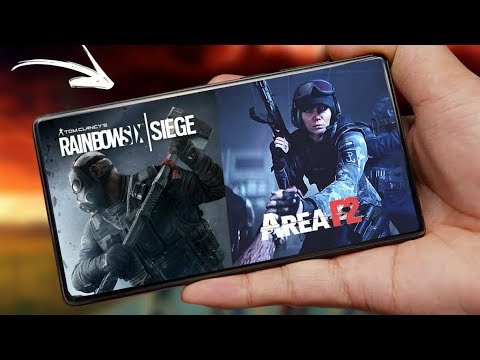As a matter of general principle, copyright laws only protect the manner in which an author expresses his or herself in an artistic or literary form, however copyright does not protect mere general idea and this is why in every copyright dispute, the first point of action is to arrive at a point where it is possible to differentiate between ideas and expression of ideas. With respect to video games, such differentiation might be difficult to achieve due to the advance level of game creation and the inability for judges to tell the difference between rules of video games and an expression of these rules of video games. Rules of video games are general rules that ordinarily should guide the making of a game, for example, it is a rule of football games that it should consist of two goalposts and twenty-two players on the football field and this cannot be copyrighted by any game creator.
The inability to differentiate between the rules of games and the expression of these rules, is what makes the issue of cloning of video games a prevalent issue in the Esports industry as shown from several case law precedents. The current case between makers of Rainbow six siege and the Makers of Area F2 is not the first incidence of game cloning in the gaming industry and a case that comes to mind is the case of Tetris V. Mino in which the facts of the case had to do with game cloning and we can assume that the same principles in that case will be applicable in this battle between Ubisoft and the makers of Area F2.
However with the abstract nature of video games copyright, it is possible that both sides are able to make compelling arguments to support their claims. This essay will thus be an evaluation of these two sides, using an unconventional debate style writing to make a case for each side and thus comment generally on copyright law in video games.
GENERAL PRINCIPLES OF COPYRIGHT IN VIDEO GAMES
It is generally accepted that video games are as a result of creative expressions which brings it under the purview of intellectual property. It is the intention of intellectual property protection to ensure that a balance is sought between the right of the creator to enjoy the economic benefits that accrues from his creations and the right of the general public to use this ideas as in their expressions. This drive for balance is what influences most video games copyright cases of which Rainbow six siege and Area F2’s contest at this point is about.
This drive for balance has developed various principles and concepts which now serve as guideposts to the determination of whether there is an infringement of copyright in video games.
IDEAS AND EXPRESSION DICHOTOMY
The first principle that needs to be highlighted for first time readers is the idea-expression dichotomy which simply means that copyright will not protect an idea, only its expression. However, this doctrine is difficult to apply especially in the context of computer programs and as such just like the case of Tetris V. Mino, the judge in this Ubisoft and makers of Area F2 battle must be able to distill between the copyright-able expression in Rainbow six siege and the unprotected elements of the program, then evaluate whether there is substantial similarity between such expression and defendant’s Area F2 game. To this extent, the analysis must begin from understanding the ideas and concept of Rainbow Six Siege itself and the rules of the type of game it is, which is a close quarter battle game.
DOCTRINES OF MERGER AND SCENES À FAIRE
The doctrine of Merger and Scene a Faire are crucial to the understanding of the idea-expression dichotomy. Merger in copyright exists when an idea and its particular expression become inseparable. To understand this concept, reference must be made to the United States case of Kay Berry, Inc. v. Taylor Gifts, Inc. , where the court stated that the concept of Mergers is when an author’s expression becomes indistinguishable from the idea he seeks to convey, such that the two merges. The rationale for this doctrine is that if the law were to protect expression in such instances, then the copyright holder would have an unacceptable monopoly over that idea and there lies the need to strike a balance between the two unenviable positions of either allowing an infringer to unlawfully copy another’s expression or preventing the use of ideas rightly in the public domain, it is better to allow such copying rather than suffer the loss of future works that would have been developed based on those ideas. The general idea is that the concept of Merger in copyright is appropriate when there are no or few other ways of expressing a particular idea. But if the same idea can be expressed in a plurality of totally different manners, a plurality of copyrights may result and merger will not prevent protection of one’s expression.
The second doctrine is known as “scènes à faire” (literally meaning a scene that must be done) and the United States case of Jackson v. Booker , clearly explains this doctrine by describing it as the “incidents, characters or settings which are as a practical matter standard in the treatment of” a particular subject”. This translates to mean that where in a video game, there are similar features that are almost indispensable for the creation of such game then such game cannot be protected by Copyright.
MAKING A CASE FOR RAINBOW SIX SIEGE
Having dealt with the basic principles of determining copyright in video games and also the case law precedents, the next thing is to compare the audio‐visual aspects of the two games, in other to separate ideas from expression and this will include understanding the game at an abstract level and the concepts that drive the game.’
Ubisoft Standpoint: They will argue that rainbow six siege is a close quarter battle game that pairs team against each other in an attacker and defender mode with different objectives. Just like the case of Tetris V. Mino, the style, design, shape, and distinct features of characters and buildings are expression of ideas and should be copyrightable.
Just like the case of Tetris where even without considering the other allegedly infringing aspects, the court found copyright infringement based on the fact that video game characters or pieces are nearly identical, Ubisoft will be invoking this principle to state that both games are identical, and they will be attaching screenshots of youtubers/content creators alluding to this fact.
The question then is what are the elements that can be said to be infringed upon? And with respect to this question, the following will be considered:
Characters: The rules of close quarter battle games are definitely available for everyone to build upon and as such there is a high tendency for characters to have the same qualities in some instances and examples are: In rainbow 6 you have a character like Finka whose quality is to inject susbtances into his body to be stronger and this is similar to the panther character in Area F2,also you have a character like Mute in rainbow 6 who has a device that disrupts the signal of anything tech within his vicinity and this character quality is similar to Silence in Area F2. In a CQB game, you most certainly will have characters that should have these qualities as it is commonplace, however, Ubisoft will have to make reference to character qualities that are fanciful and that are a product of imagination only. For example: the character Pulse in R6 has the quality of being able to track enemy heartbeat, which is similar to Area F2’s Spider character. The question is, will such character quality be normally associated with a CQB game? well the makers of R6 will disagree and as such they will be making reference to other characters like this.
Game Designs/Game play: The general gameplay is one that Ubisoft cannot lay claim to because they are all part of the rules of CQB games and by this it means the preparation phase involving: The UAV recon, wall blocking are rules of the game. Based on Tetris case, Ubisoft will be laying claims to certain distinctive elements of their game which includes: The way you get notified if one member of the team in the 5v5, game lobby, loading screens, game skins and every other little thing that shows it is not part of the game and could have been expressed in another way by the makers of Area F2.
It will be interesting to see how the case goes for Ubisoft because there are other cases like this in the past and they somewhat ended in settlement or with the cloning company offering to sell the rights to the game. A typical example is between the makers of PUBG and the rules of survival, in which that case ended in a settlement which was never disclosed.
MAKING A CASE FOR AREA F2
Area F2 is not without its own defense as to whether or not it has infringed on the copyright of Rainbow Six Siege. As reported, Ubisoft has not sued the makers of Area F2 but have sued Apple and Google who are distributing the games in itself. These maybe for practical reasons. One of such is the intention to halt the distribution and prevent further financial losses that may occur due to the distribution of the game. A suit against Apple and Google who are distributing the games will mean removal from the app store and thus mean that the infringement can have far less consequences on the popularity of the Rainbow Six Siege and prevent a perceived rip off before it happens.
However, another reason can be the differences in the copyright regime in China and In the United States and Europe as especially as to the protection of video games. It is thus that this section will argue that in the eventuality that a suit is brought against Area F2 in china, the threshold for proving infringement would be higher and might be more difficult to prove.
The aggregation of the current standard in China shows that for a video game to be protected, the yardstick would be rather based on three criteria. Originality, access and Substantial similarity.
The court identifies how original the elements in the games are, whether or not there could have been access to the game claiming copyright as well as whether the similarities are substantial. These three elements tend to aggregate to how original the work is.
In Nexon Holdings v. Tencent Ltd a case in 2007, the South Korean game giant Nexon Holdings (hereinafter referred to as Nexon) filed for copyright infringement and unfair competition against Tencent Ltd. (hereinafter referred to as Tencent) in China. The bone of contention was the similarity between Tencent’s online strategy game QQ Tang and Nexon’s popular game Pop Tag. Nexon claimed 37 similarities between the two games involving game content, game play and game design. Tencent on the other hand argued that there was no substantial similarity. In accessing the standard, the court identified that there could have been access as Nexon’s game was released a year before Tencent’s game and the 37 similarities were not proven in evidence. The court maintained that the plaintiff did not provide enough evidence to prove that the 37 similarities appeared prior to the defendant’s game release, thus the court deemed that the defendant should bear the disadvantages.
Quite staggering don’t you think? The question is how can 37 similarities not be proven? Simply placed side by side, the similarities are supposed to speak for themselves. The court went in examining similarities in the design of the woods, the aircraft, the placement of the players and the map structure that this did not constitute substantial similarities but fall within the idea sphere which cannot be covered by copyright law. Other similarities such as in game props which had difference in design were held to not amount to substantial similarities.
This case law identifies that the likelihood of success in China as regards the standards of substantial similarities is quite low and would require extensive proof to show that the similarities accrue to originality in itself. This was done in the Taiji Panda v. Hua Qian Gu case where the plaintiff had to show that Huan Qian Gu was a complete mirror of the Taiji Panda by showing that the game had similar décor, core elements and game play. They had to prove to the court that the functional module description, module structure diagram, functional flow chart and functional detailed design were all related to Taiji Panda. And that there were even screenshots of the game interface of the Taiji Panda in the design documents of the Huan Qian Gu.. The court agreed with the plaintiffs and held that the Huan Qian Gu was a re-skinning of the Taiji Panda.
The process was a careful examination of the element of both games excluding elements that were not copyright-able such as abstract expression, non-original expression, industrial standard expression, and the components in the public domain. The court also excluded the in-game credits and coins and the in-game marketplace as they did not meet the high bar for originality, as well as the layout of the interface in Taiji Panda, such as the nine-by-nine grid, the vertical list, pop-up boxes and vertical list combinations, because these elements are all functional.
The court found that the detailed presentation of game rules via the game interface design constituted a specific expression of gameplay which is copyright-able and can be found to have been infringed upon by the makers of Juan Qian Qu.
From the distillation of the case law of the Chinese jurisdiction, it is evident that it will be a very difficult task to prove that the similarities are indeed substantial especially bearing the popularity of CQB in recent times. It will be a daunting task to prove that the similarities are not merely generic and are ideas.
CONCLUSION
As recent reports have shown, Area F2 has been taken down from the google play store and the apple app store and its servers taken down as the official website announced. This can be translated as a win for Ubisoft and a loss for the jurisprudence of intellectual property law especially in light of copyright of video games. It would be interesting to see how the Chinese courts would have interpreted the similarities and the analysis of the court if Ejoy had been sued directly. It would have been a proper examination of the extent of which copyright can protect CQB games especially as they are increasingly similar to each other and in many cases developed drawing inspirations from each other.
Co-written By: Stephen Ojo & Ibitayo Akinkuolie - Esports consultant in Nigeria, West Africa



